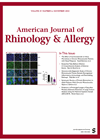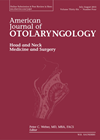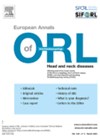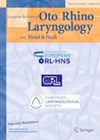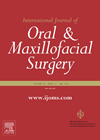
Journal Reviews
Balloon dilatation of the eustachian tube - largely very safe but not entirely without risk
Consent is a fundamental part of our daily working lives. This is something as simple as consent to examine a patient, consent to undertake a procedure as minor as taking blood, through to consent for a major operation. Whatever the...
Does transoral robotic surgery improve outcomes among patients with head and neck cancer of unknown primary?
A tonsillectomy and tongue base mucosectomy is becoming increasingly accepted as the optimal surgical intervention to aid in identifying the primary source of a p16+ / HPV-related squamous cell carcinoma (SCC) of unknown origin, given that this disease almost exclusively...
Septoplasty revisited
Septoplasty is one of the commonest rhinological surgeries performed. With the advent of minimally invasive surgical concepts, endoscopic targeted septoplasty was introduced. This study aimed to compare the complications and outcomes between endoscopic septoplasty and conventional septoplasty by a PRISMA...
Organoids in otolaryngology
This interesting review article summarises the status as well as future prospects of organoid technology in our field. Organoids are a mass of cells which are typically cultured in vitro with 3D technology. They simulate miniature tissues and organs and...
Helmets make a difference in bicycle injuries
This is a meta-analysis of maxillofacial injuries arising from riding a bicycle. The incidence of maxillofacial fractures in cycling accidents varies from 3-20% and, whilst the effectiveness of helmets in preventing traumatic brain injuries is well known, their protective effect...
Active surveillance for papillary thyroid cancers – what is the risk of progression?
Papillary thyroid cancers (PTCs) are generally considered to be indolent malignancies with favourable outcomes. Active surveillance (AS) has consequently been trialled as a management option for small PTCs with no evidence of regional lymph node involvement, especially papillary thyroid microcarcinomas...
Dizziness questionnaire and telemedicine during Covid pandemic
During the initial phases of the Covid-19 pandemic in 2020, delivery of ENT care adapted significantly. Kaleva et al present their findings of telephone balance consultations during the pandemic with a randomised prospective study utilising a dizziness questionnaire in West...
Still not smelling
Post-Covid anosmia/hyposmia is a troublesome persistent symptom for lots of patients. Management is still elusive. This was a nationwide survey of ENT practitioners. Of the 715 surveyed members, only 7.4% responded. Most performed a nasal endoscopy, 60% ordered an MRI...
Occurrence of cancer in asymmetrical tonsillar enlargement in adults
With significant increase in head and neck cancer in the last decade, attributed to HPV, fast-track referrals from primary care have markedly increased, adding further to the burden on the NHS. Whether or not unilateral tonsillar enlargement alone, without red...
Infection and other factors influencing post-tonsillectomy haemorrhage
In this detailed narrative review article, the authors have addressed several factors which could be related to postoperative bleeding after tonsillectomy. As regards to microbiology, the significance of micro-organisms present both on surface and within the tonsils is emphasised and...
Does pregabalin help with post-tonsillectomy pain?
This is a small double-blind randomised controlled trial conducted on tonsillectomy and lateral pharyngoplasty operations. Both of these operations are terrifically painful, and I am sure most of us are looking for a way of reducing the suffering for our...
Can tympanometry be used to diagnose Ménière’s disease?
The authors proposed multifrequency tympanometry (MFT) as an in-office test which may be able to diagnose Ménière’s disease (MD) that is quicker and more cost-effective than other methods. MFT measures the acoustic admittance of the middle ear and external ear...

